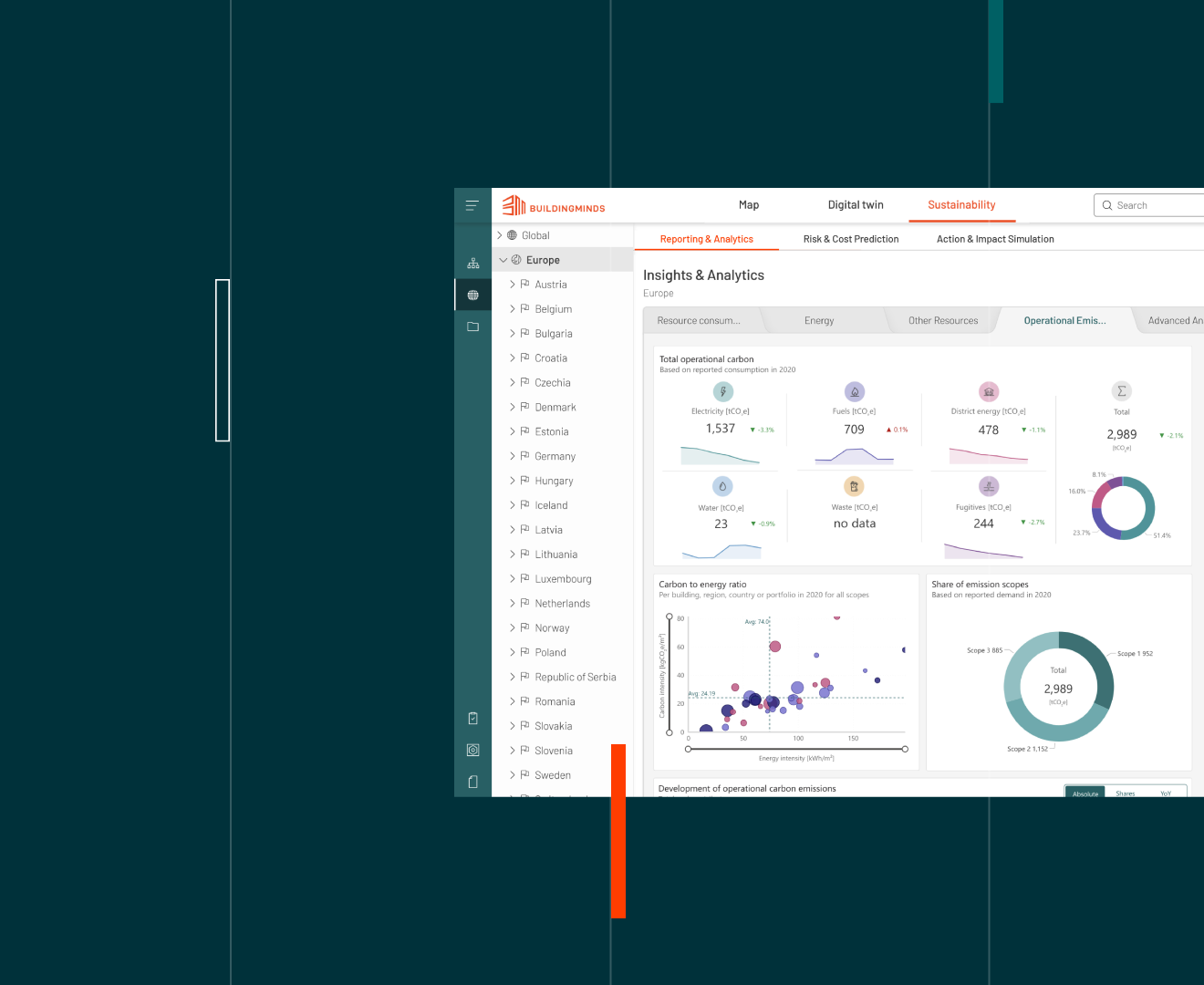The 3 steps towards data-based insights

Data is the key to future-proof portfolios. The real estate industry is facing requirements for high levels of granularity (resolution), accuracy, currency and richness in data. At the moment, building portfolios have to implement a combination of effective tools and emerging technologies to be able to integrate profitability targets, decarbonization and people wellbeing goals.
The problem: real estate data is mostly trapped in physics or locked in data silos
If real estate would be able to integrate all relevant data in one single system, investors, owners and process-stakeholders would be able to get exactly the right information when they need it.
Time to start digitizing physical assets
Real Estate business consists of many processes throughout the value chain. The underlying systems have to be identified and data needs to be validated with specific standards. Process-specific data can then be defined and prioritized according to related clusters.
The Digital Building Twin acts as a central cluster for data. It creates a framework that connects all other clusters to it, which include real estate processes and data clusters for the entire lifecycle of assets. Building-specific data is extracted by identifying the building structure from the Digital Building Twin, defining the building master data cluster, and identifying relevant documents.

Implementing a common framework
A Common Data Model provides self-describing data based on its common language. It keeps all of the data to be shared between applications as well as data sources in one place, a data lake. In this data lake, predefined schemas include entities, attributes, semantic metadata, and relationships are maintained and they represent commonly used concepts and activities in the industry. These help organizations build their own data based on the Common Data Model.
To make data available in the most valuable, insightful and comparable way BuildingMinds, Microsoft, pom+ and RICS have founded the “International Building Performance and Data Initiative” which has the target to integrate international and national standards into the Common Data Model. To ensure an unprecedented level of value and usability, the Common Data Model will be developed based on market feedback and will be continuously assessed and improved.
Leveraging the power of your data

Data consumers, such as reporting tools, can leverage the Common Data Model language and present it in customer-specific dashboards and reports. Applications and data sources can be decoupled from each other and a report using the Common Data Model can easily be applied to a similar scenario, even if the data source is different.
Learn more at www.ibpdi.org.



